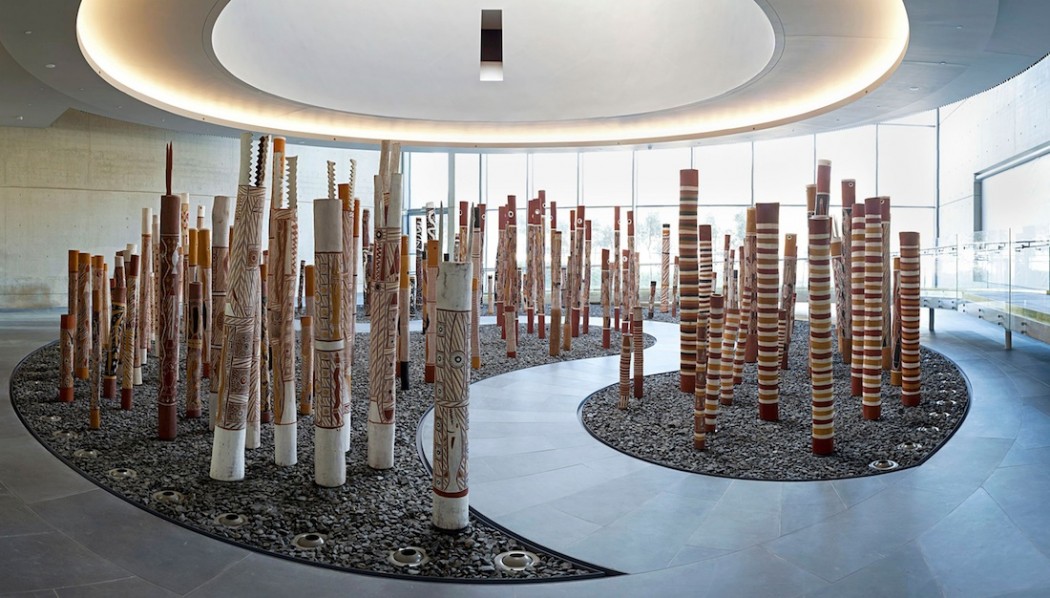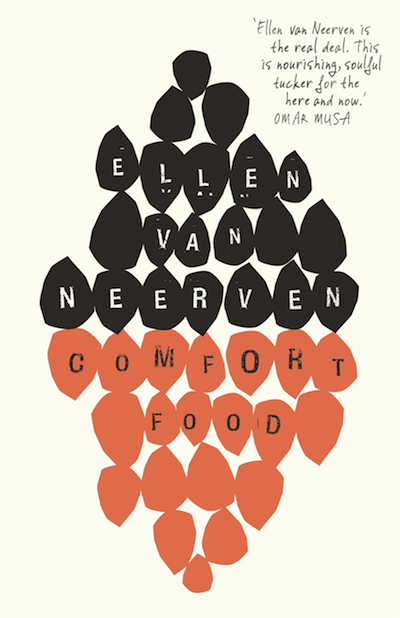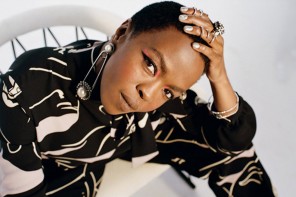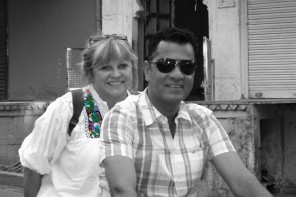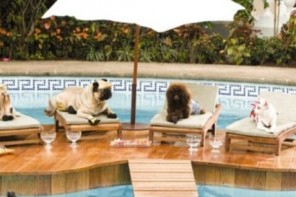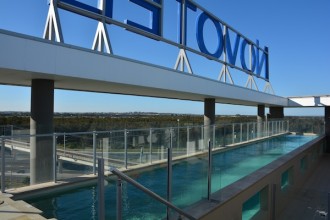The Boomerang fundraiser provided a feast of ideas on art, culture and education at the Lennox Community Centre last Wednesday, writes Digby Hildreth.
The language of Shakespeare (and its parallels in hip-hop); poetry celebrating the earthy spirituality of food and the recollections of a radical curator provided a feast of stimulating ideas to a crowd that defied last week’s scary weather to attend a forum on art, culture and education.
Part of a series of fundraising events for the Boomerang Festival and convened by Bundjalung powerhouse Rhoda Roberts, the evening called upon the experience of Ellen van Neerven, Djon Mundine and Akala – artists whose most valuable educational experiences came not through mainstream institutions but through art and culture.
Djon Mundine trained as an accountant before he “ended up in the arts”, a career which has taken him all around the world, but most importantly to very traditional corners of Central Arnhem Land, the communities of Maningrida, Milingimbi and Ramingining. There he saw a lot of art, dance and ritual performance which gave him a broad consciousness of his Aboriginal ancestry, where he came from and what he could say. These are very religious places, Mundine told the audience, where all art has a cosmological significance, where everything fits together and interconnects.
The culturally enrichening experience “saved my life although the fact Ramingining was a dry community perhaps even more,” Mundine said, self-deprecatingly.
In one of the communities “half of the society made art for the other half”. It was a reciprocal way of looking at the world, “and I have always tried to bring that to my curating,” he said. In the 70s there was a change in the way Aborigines saw themselves, he pointed out, and approaching the bicentenary in 1988 many had problems with the upcoming celebrations. Major figures in the Aboriginal art community decided to boycott them, “and the retribution came fast”. But Mundine’s concept of a “forest” of 200 totem poles – to match the idea of 200 years of colonialism – was warmly welcomed by National Gallery Director James Mollison.
The poles are also bone coffins – sacred, ritual objects, with every tree containing a spirit – and they stand as an Aboriginal memorial, to all those who died defending their country since 1788, as well as innocent women and children. It shows how Aborigines are embodied in the landscape and is also a celebration of tradition and of life.
Mollison saw it as the single most important item in the gallery’s exhibition and it is now the first thing you see as you enter, a work “that tells us about the history of art in this country”, Mundine said. “It starts with art, where the heart is.” It was inspiring for the nine Central Arnhem land communities who contributed to it and it is a window into Aboriginal history for all Australians.
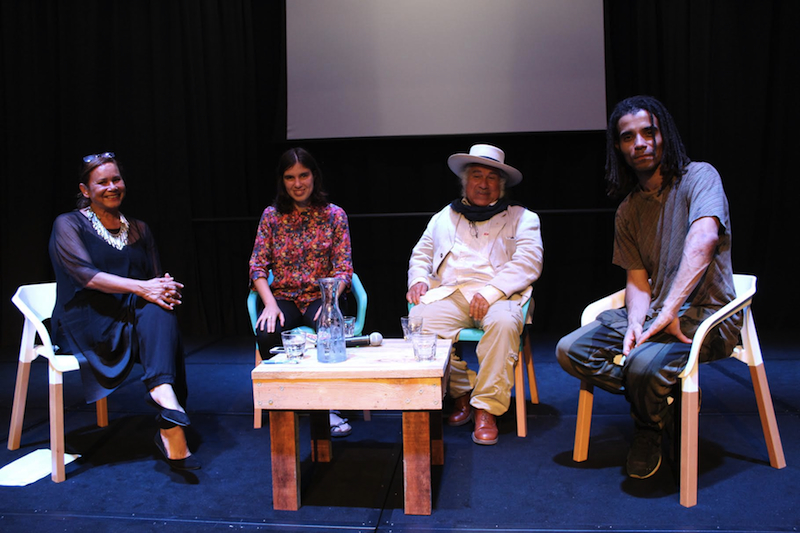
From left: Rhoda Roberts, Ellen van Neeren, Djon Mundine and Akala at the Lennox Cultural Community Centre. Photo: Kirra Pendergast.
As an Aborigine, a queer woman and descendant of a migrant, van Neerven found school difficult. Mainstream Australia has “a rigid view” of that. But there was sport, and reading. “I wanted to be invisible, and one way was to escape into a book,” she said. The experience, and her mother’s example, helped her develop resilience, courage, and at university, engaging with black fella academics, she came into her own.
Her first day at university was in 2007 when PM Kevin Rudd issued his Sorry statement. “I felt the energy in the common room; we were in this together.” Her writing took off. “Writing for us is a subversive act, black words on a white page,” she said. “There is no line between art and activism – opening up through language and how it’s used…We live in such a violent country, with dirty little secrets scattered all around, kids removed from their families, media censorship of us and our language. You have to have a voice against this, the theft of who we are…There’s no way round but to tell the truth,” she said. Her voice is now heard through her poetry, which is taught in schools. She read from her most recent book, Comfort Food, the poem Whole Lot, a response to Emily Kame Kngwarreye’s painting Big Yam Dreaming:
family, earth
dingo, eagle
fire, food
Whole Lot
it’s all of those things
we start with black
let it get hold of you
look at the stars
or are you afraid to?
… Don’t be scared
The book’s focus on the culinary arts explores how food is so important: “It keeps us alive as a people, connected to the source, earth, and to heart and healing.”
Rapper Akala’s grandmother was part of the “windrush’ wave of migrants from Jamaica into Britain post World War II. His father married a white Brit, though mixed race relationships were not common then.
It was a rich mix and politics was a common topic in the household conversation, and a great influence on him – matched by his experiences of attending rehearsals and shows at the Hackney Empire, where his step dad worked. Among them were KRS-One, the American rapper/activist. “My journey with art was heavily informed by those experiences,” said Akala, and he came to believe that “all art is political”. However, while art was a great force for political change, artists don’t make the changes: “The people do that; though artists may provide the soundtrack,” he said.
Language was a key theme of the evening, and Akala challenged the audience to identify lines from Shakespeare play and rap songs: we mainly got it wrong. Shakespeare had been politicised, with players required to use “the king’s English” before it even existed, he said, to foster an elite and make people feel dumb. A strategy of colonialism was to break the link transmitting culture down the generations, Mundine noted – language being one of the main ways of cultural expression. “We need to practice our language, so we can see ourselves as normal.”
Cultural expression was very vibrant in Bundjalung country, said Rhoda Roberts, and helped by centres such as the Muurrbay co-operative in Nambucca Heads. “I’m very hopeful that in 10 years time we’ll be greeting each other in language,” she said. The Boomerang Festival can only encourage that sort of progress – and Roberts said her wish was to see it as a stand-alone event.
“It’s a vital opportunity for the East Coast to showcase the culture of the first peoples, from here and all over Australia, to locals and around the world.”
Further fundraising events planned for 2017 include a dinner hosted by Harvest and Three Blue Ducks at the Earth House in Clunes in March, and a forum on Aboriginal Agriculture and Farming with Bill Gamage and Rob Appo in April.
To buy tickets, donate to the cause, or see the line-up go to: boomerangfestival

